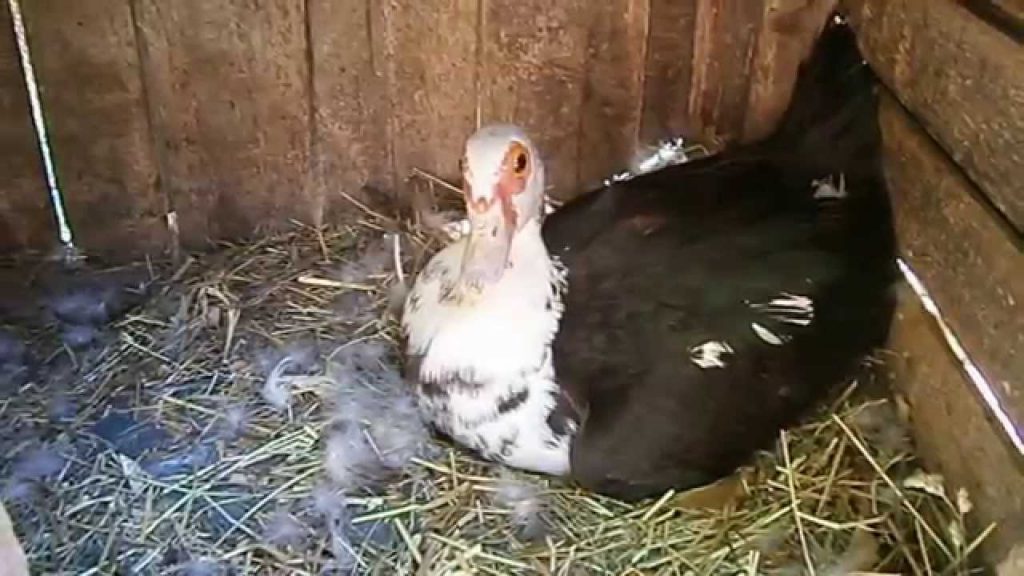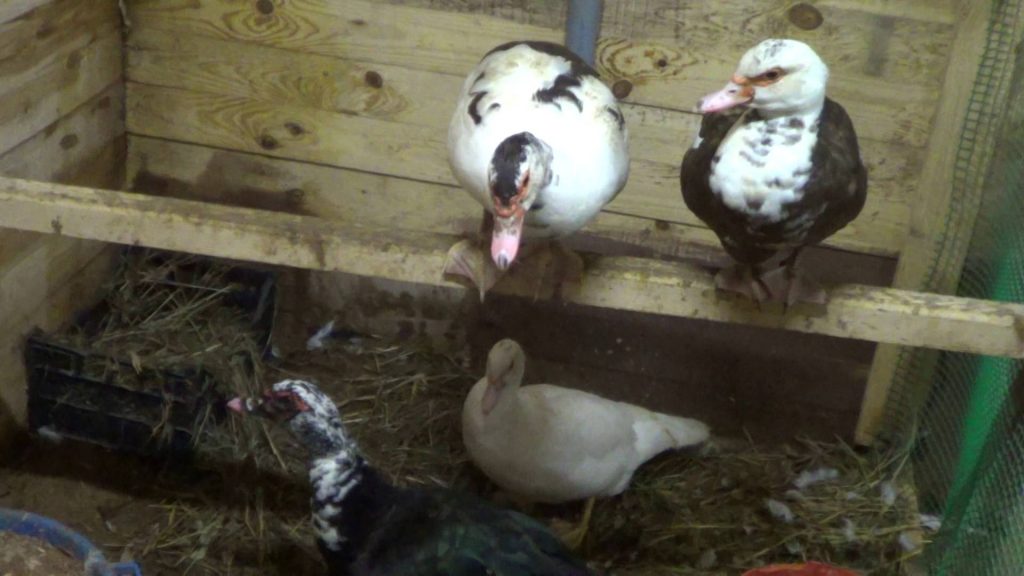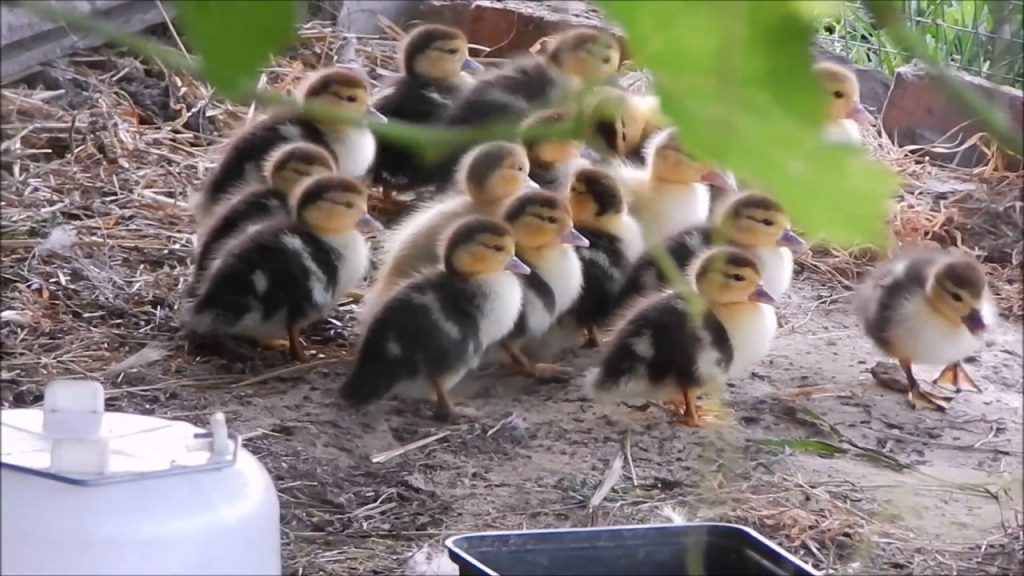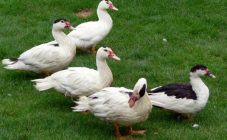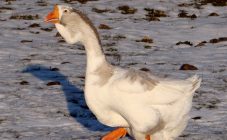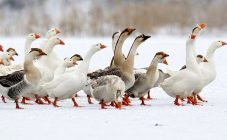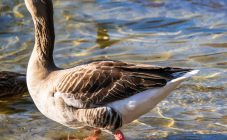Content:
Indo-ducks are a very interesting species of ducks, they have not only a beautiful appearance, but also beneficial for breeding. These birds are also called musky. This name came about due to the specific smell emitted from the glands above the beak. Experts say that it really resembles the smell of musk.
What does a musk duck look like?
This bird came to Russia from distant South America, where the wild muscovy duck was domesticated. In addition, they still have the instincts of their ancestors. Now Indo ducks love to fly, climb a tree. The meat of these birds is not fat at all, dietary, has a red color and at the same time is very tasty. It is because of the taste of these feathered beauties that most people breed.
Considering the description of the musky duck, you are simply amazed at what variety of colors there is in the palette of its color.
Here you can see the plumage of the following colors:
- white;
- black;
- blue;
- white and black;
- blue and white.
The Indo-ducks got their name because of the peculiar structure of the beak, above which there is a tubercle, which resembles a turkey in its appearance.
Musk duck does not disdain scraps from the table. In addition, good food for these birds can be purchased at the pet store. Considering the characteristics of Indo-Ducks, we can say that they are very calm, quiet birds. They are also popularly called "dumb duck" or "whisper ducks". Compared to others, these birds are very quiet, they walk calmly in the yard, do not start fights and noises. They also emit quiet sounds, somewhat similar to tunes, especially during the mating season.
Like all birds, these birds love to walk in the wild, but at the same time they calmly tolerate the room, if an urgent need arises. It often happens that domestic Indo-girls are left unattended, then they can freely go on a journey, where they fall under the wheels of a car or into the clutches of a predator. It is for this reason that they need to be kept in a fenced enclosure. In addition, at a time when the birds become heavy, it is difficult for them to move and run away from danger.
According to the types of musk birds, they can be divided into:
- Mutees;
- Dumb;
- Moscow.
In addition to these breeds of Indo-Ducks, there are also hybrids, which are called Mulard.
Also, the breeds of muscovy ducks are divided into subspecies:
- wild blue Indoor;
- brown wild;
- wild.
Moreover, these ducks can be seen in different shades of eyes:
- gray-blue;
- brown;
- light brown.
This is how they differ from other ducks. Another feature of these birds is that their plumage tends to sparkle under the sun's rays.
How to keep muscovy ducks properly
These birds love to be in a clean, dry environment. Also, there should be enough space in the area where they sleep. The best option for flooring would be a grid measuring twenty-four by twenty-four millimeters. In this case, this grid should be at a distance of thirty centimeters from the floor. When designing the floor covering, it is advisable to make the net movable so that it can be lowered and raised freely for easy cleaning of the house.
Reproduction
Muscat ducks are very clean and must be properly conditioned to start laying.
It is necessary to prepare a bedding, which consists of:
- straw;
- hay;
- large and small sawdust.
It should be noted that the litter should be changed on time, since mold fungi and a lot of dirt will grow in it over time, which will provoke diseases. To breed these birds, you will need to create a broodstock. For this, no more than four females are selected for one thoroughbred male.
In this species of ducks, males become adults much later than females. Therefore, you need to ensure that the drake is at least a month older than the ducks. During one year, the female is capable of laying from one hundred to one hundred and fifty eggs. In most cases, it begins to lay in March, but there are times when the first eggs appear in February.
There are two ways to get offspring:
- with the help of brooding hen;
- using an incubator.
If the first option was preferred, then you need to know how to properly prepare a place for a roost. When making a platform for the ducks for a nest, you need to remember that they should be at a considerable distance from each other, since, having heard the squeak of the babies, mothers can leave their clutches and go to nurse the already hatched musky ducklings.
The brood hen should be fed dry food and walked in a separate enclosure where she can graze in peace. You can approach the nest and inspect the clutch only if the mother is absent. Indo-women are very responsible mothers, and during the roost they sit to the last. In addition, if the brood hen already has experience, it will be better to look after the chicks than with artificial rearing.
If the hen was a young individual, then it is better to take the babies from her, since she has not yet learned how to move correctly so as not to step on the ducklings and injure them.
Throughout the season, one duck can hatch up to three broods of ducklings. From one brood of twenty, or even twenty-five eggs, only up to seven females and all other males hatch. Proper storage of eggs is important when using an incubator. Only using eggs that have been stored for about eighteen days at a temperature of plus eighteen degrees, you can get a high percentage of hatched ducklings.
Why does the Indo-woman not roost
There are times when a bird does not sit down to hatch offspring.
This happens if:
- the individual is very young;
- the house is in a noisy place.
The second defect is easier to eliminate. To do this, you need to move the nest to a quiet and peaceful place. Or even build several nests, and the duck itself will choose the perch to its liking. If she does not sit down, because she is young, then you need to wait it out, but in no case force her to sit down by force.
Ducklings care
Newly hatched ducklings are fed a small boiled chicken or duck egg for three days.After that, cottage cheese, a grain mixture cooked in milk or broth should be added to their feeding. The diet also includes herbs, nettles and dandelions.
For older ducklings, the menu is changed. You can already add boiled potatoes or Jerusalem artichoke to this. On these products, ducklings grow quickly and gain weight. Many are interested in how much an adult Indoor weighs. The female weighs between three and a half to four kilograms. The domestic male grows from five to seven kilograms. Grain must be added to the feed.
The first days the brood of duck should be kept warm. They can be heated with a warm heating pad or a special lamp. Feeding can begin on the second day after they hatch from the egg. If the ducklings are led by a female, then they can be released into the pond on the fourth day. But incubator babies can be allowed to swim only after a month. It all depends on the development of the sebaceous glands, with the help of which the fluff of babies is covered with a special waterproof film.
Despite the fact that Indo-Ducks are considered to be birds with high immunity against diseases, it is still necessary to monitor their health.
Very often birds are affected by diseases such as:
- viral hepatitis;
- lack of plumage;
- pasteurellosis or cholera;
- aspegillosis;
- salmonellosis.
To avoid these diseases, it is recommended to vaccinate ducklings after four and eight weeks.
Advantages and disadvantages
Muscovy ducks have pros and cons. Of course, Indo-girls have a lot more advantages than disadvantages.
The advantages include:
- persistent immunity to various diseases, due to which they survive at an early age almost one hundred percent;
- not whimsical in food, they can eat all kinds of food;
- for this type of bird there is no need to make a reservoir, they can safely drink from drinking bowls;
- high egg production rates;
- they make good hens.
Among the disadvantages should be highlighted:
- The possibility of cannibalism in ducklings. In this case, they can peck at their fellows. This happens if there is little room in the room for the number of babies.
- Another disadvantage of this breed is the desire to peck at shiny objects. Therefore, you need to ensure that there are no nails or glass near them.
Indoor female maintenance is a profitable activity, but it requires attention and care. Then the farmer will receive poultry meat of high taste.
